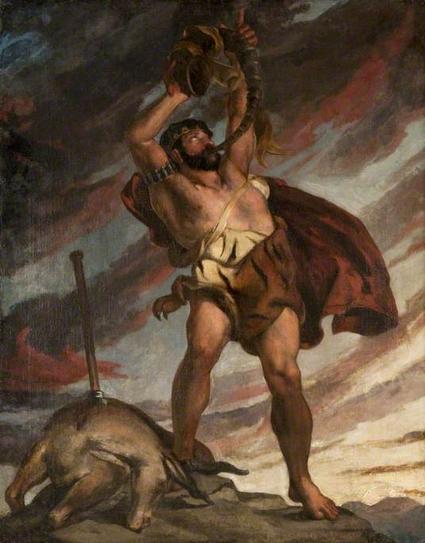Slater: Brooklyn Nets have talked to four top prospects, led by Jeremiah Fears https://www.rawchili.com/nba/36283/ #Basketball #Brooklyn #BrooklynNets #BrooklynNets #by #fears #four #FrontPage #have #jeremiah #led #NBA #Nets #NetsDraftRumorsNews #netsdaily #prospects #slater #talked #To #top
#jeremiah
Jeremiah Estrada and the ‘chitter’ https://www.rawchili.com/mlb/26278/ #and #ball #Baseball #chitter #Estrada #FrontPage #gaslamp #jeremiah #MLB #Padres #SanDiego #SanDiegoPadres #SanDiegoPadresAnalysisCommentary #SanDiego #SanDiegoPadres #the
Join us as we explore the powerful message from Jeremiah urging us to mend our ways and listen to God's voice. Discover the significance of repentance and the promise of mercy that awaits those who obey. #Jeremiah #BiblicalTeaching #GodsVoice #Repentance #FaithJourney #SpiritualGrowth #Obedience #DivineGuidance #ScriptureStudy #ChristianLife
Explore the crucial balance between justice and mercy, as we reflect on divine lessons shared with Jeremiah. Discover how embracing both can lead to transformation and forgiveness, shedding light on the importance of listening and turning from our ways. #JusticeAndMercy #DivineLessons #SpiritualGrowth #FaithJourney #Transformation #Jeremiah #BalanceInLife #Forgiveness #ListenAndReflect #InnerPeace
“O Lord, my strength and my stronghold, my refuge in the day of trouble”
Jeremiah 16:19a
🏳️🌈 ✝️ #RainbowingTheBible #queerness #queer #bible #lgbt #lgbti #lgbtq #lgbtqia #Jeremiah
Discover how Jeremiah's unwavering faith led him to follow God's instructions even when faced with adversity. This powerful message emphasizes the importance of listening to divine guidance over worldly fears. Join us as we explore the lessons we can learn from his journey. #Jeremiah #FaithInGod #DivineGuidance #Obedience #BiblicalLessons #CourageInFaith #ChristianInspiration #SpiritualJourney #TrustInGod #FaithfulLiving
#HappyBirthday @seanastin #seanastin #actor #thegoonies #memphisbelle #toysoldiers #rudy #boymeetsgirl #Lordoftherings #strangerthings #ANonsenseChristmas #50firstdates #LoveHurts #HolidayTwist #HardMiles #click #JusticeLeague #specialagentoso #teenagemutantninjaturtles #NoGoodNick #jeremiah #Hercules
Old Testament Reading: #Jeremiah 17:5-10
YHWH commends those who trust in Him.
Funny things about words.
https://www.urbanmind.net/display/f7dd981d-1067-a353-835f-4a5479987391
Jeremiah 1 - The boiling pot
Then the Lord said to me:
“Out of the north calamity shall break forth
On all the inhabitants of the land.
For behold, I am calling
All the families of the kingdoms of the north,” says the Lord;
“They shall come and each one set his throne
At the entrance of the gates of Jerusalem,
Against all its walls all around,
And against all the cities of Judah.
Jeremiah 1.13-15
#church #Israel #Jeremiah #jesus #jesuschrist #Messiah #SignsOfTheTimes
https://lightforthelastdays.co.uk/video/jeremiah-1-the-boiling-pot/
Old Testament Reading: Jeremiah 1:4-10
YHWH called #Jeremiah.
Okay, a rabbit trail may have revealed a funny point about the NRSV's textual history.
#Genesis 10:14 = #1Chronicles 1:12 lists the peoples of Pathros, Kasluh, & Kaphtor, mentioning in passing that the Philistines came from Kasluhites.
Oddly, #Jeremiah 47:4 and #Amos 9:7 identify the Philistines as coming from Kaphtor, not Kasluh.
What's going on here? Dunno. Perhaps a marginal addition was incorporated into the main text in the wrong spot in Genesis.
1/?
06 October 2024
Jeremiah 29:11
Read More - https://vatenoa.com/jeremiah-2911/
For completely printable verse-of-the-day graphics, visit our verse-of-the-day image board at https://vatenoa.com/verse-of-the-day-image-board/
#Jeremiah 29:11
Simeon Chavel just uploaded a new paper that I mostly disagree with but found very stimulating. Chavel’s main point, that we shouldn’t talk about “Semitic” peoples etc. anymore, feels like a partial strawman, as I don’t think a lot of contemporary scholars do that anyway. Meanwhile “Cushitic” is still very much in use to refer to languages (contrary to what he seems to believe) and I don’t see many good reasons to give up “Semitic” in that context either.
The part of Chavel’s paper that I found most interesting, however, is his analysis of the Table of Nations, Genesis 10. Chavel follows(/furthers?) a view put forward by Guy Darshan that besides a Priestly text, Gen 10 contains a large amount of text from a competing system of cataloguing the peoples of the world. We find this in the lists of the descendants of Cush (just the Nimrod passage), Mizraim, Canaan, and Eber. These four passages are stylistically quite different. While Chavel seems to take this as evidence that they all derive from one and the same source, I’m inclined to follow the more common view he mentions and take them as four separate additions to the text. As I hope to briefly set out, this is supported by the way these passages relate to the rest of the chapter and the Pentateuch as a whole.
The Priestly base text
Something I hadn’t understood before Chavel’s paper is how neatly you can get a coherent, straightforward base text of Gen 10 by just sticking to the lists of “sons”.1 Here it is in translation:
1 Now this is the genealogy of the sons of Noah: Shem, Ham, and Japheth. And sons were born to them after the flood. 2 The sons of Japheth were Gomer, Magog, Madai, Javan, Tubal, Meshech, and Tiras. 3 The sons of Gomer were Ashkenaz, Riphath, and Togarmah. 4 The sons of Javan were Elishah, Tarshish, Kittim, and Dodanim. 5 From these the coastland peoples of the Gentiles were separated into their lands, everyone according to his language, according to their families, into their nations.6 The sons of Ham were Cush, Mizraim, Put, and Canaan. 7 The sons of Cush were Seba, Havilah, Sabtah, Raamah, and Sabtechah; and the sons of Raamah were Sheba and Dedan. … 20 These were the sons of Ham, according to their families, according to their languages, in their lands and in their nations. … 22 The sons of Shem were Elam, Asshur, Arphaxad, Lud, and Aram. … 31 These were the sons of Shem, according to their families, according to their languages, in their lands, according to their nations. 32 These were the families of the sons of Noah, according to their generations, in their nations; and from these the nations were divided on the earth after the flood.
(NKJV)
This is a lovely segmented genealogy, just like the one in Gen 46, for instance. Every section has an introduction and a conclusion, as does the genealogy as a whole. Stylistically this matches other genealogies that are assigned to P and that attribution makes great sense too. Fascinatingly, this layer of the text contains all the Grandsons of Noah that I wrote about a year ago (time flies!). As I found there, the combination of nations that are mentioned only fits the early seventh century. So if this genealogy is an integral part of the P narrative—which it sure seems to be to me—we can date that to the early seventh century too. I thiiink I remember that Israel Knohl arrives at the same dating of his “P(riestly) T(orah)” on other grounds, but I would have to check. This is centuries earlier than a lot of European scholars would have it.
The Canaanites
15 Canaan begot Sidon his firstborn, and Heth; 16 the Jebusite, the Amorite, and the Girgashite; 17 the Hivite, the Arkite, and the Sinite; 18 the Arvadite, the Zemarite, and the Hamathite. Afterward the families of the Canaanites were dispersed. 19 And the border of the Canaanites was from Sidon as you go toward Gerar, as far as Gaza; then as you go toward Sodom, Gomorrah, Admah, and Zeboiim, as far as Lasha.
(NKJV)
The Torah.com article by Aaron Demsky I just linked has some great observations on this passage. Two points: together with Canaan himself, we have twelve ancestors/peoples, a feature we know from other genealogies (e.g. the Twelve Tribes of Israel); and the genealogy combines a list of six peoples that are to be disposessed by the Israelites, well known from other texts, with six Phoenician city-states. This is done in chiastic order: Sidon (city), Heth (people), four more peoples, five more cities.
It seems clear to me that this passage is dependent on many other parts of the Pentateuch, for the following reasons:
- The genealogy is familiar with the (non-Priestly) list of six (sometimes seven) peoples that are to be conquered, which includes the Canaanites, as well as the use of “Canaan” as an encompassing term. By combining this with six mostly obscure (to us) terms referring to city-states, it creates a list of one + eleven groups that is never used in this way elsewhere.
- Heth is singled out, being mentioned as an individual and not as “the Hittites”. I think this must be because of the references to “sons/daughters of Heth”, which sounds like they literally descend from one ancestor named Heth; members of other Canaanite people’s aren’t referred to in this way. These “sons/daughters of Heth” references all occur in Priestly texts.
- The description of the borders of Canaan in v. 19 doesn’t make a lot of historical or geographic sense, starting in the middle of Phoenicia and including cities that were prominent at different times as well as long-destroyed or possibly legendary ones. Nearly all of them occur elsewhere in the Pentateuch,2 though, and in texts that are normally assigned to different sources. This verse could be a later addition, though, so this doesn’t necessarily reflect on the Canaan passage as a whole.
If the list of Canaan’s sons depends on both Priestly and non-Priestly Pentateuch passages, it’s hard to see it as part of an originally independent source. Rather, it may have been added after the initial compilation of the Pentateuch.
The Egyptians
13 Mizraim begot Ludim, Anamim, Lehabim, Naphtuhim, 14 Pathrusim, and Casluhim (from whom came the Philistines and Caphtorim).
(NKJV)
I’m citing the NKJV for consistency here, but they messed up the translation of the last line. The preposition את shows that כפתרים ‘Caphtorim’ is part of the object of “Misraim begot”, not part of the subject of “whence3 came”. Canonically, the Philistines came from Caphtor (Amos 9:7, Jer 47:4, Deut 2:23). So I strongly suspect a scribal error for an older text like:
13 Mizraim begot Ludim, Anamim, Lehabim, Naphtuhim, 14 Pathrusim, Casluhim, and Caphtorim (whence came the Philistines).
In this version, the passage could have been added to explain the origin of the Philistines—very important in Genesis and mentioned in Exodus 15, but not otherwise provided with a genealogy in Gen 10. The bit about the Philistines could also be a later gloss, however, which would explain the incorrect placement (e.g. if it started out in the margins before a scribe moved it to the main text). In that case, there’s nothing in the Mizraim passage that shows dependence on the rest of the Pentateuch; I just wanted to make that point about the Philistines being in the wrong part of the verse as we have it.
The line of Eber
21 And children were born also to Shem, the father of all the children of Eber, the brother of Japheth the elder. … 24 Arphaxad begot Salah, and Salah begot Eber. 25 To Eber were born two sons: the name of one was Peleg, for in his days the earth was divided; and his brother’s name was Joktan. 26 Joktan begot Almodad, Sheleph, Hazarmaveth, Jerah, 27 Hadoram, Uzal, Diklah, 28 Obal, Abimael, Sheba, 29 Ophir, Havilah, and Jobab. All these were the sons of Joktan. 30 And their dwelling place was from Mesha as you go toward Sephar, the mountain of the east.
(NKJV)
Verse 24 depends on the P base text and if I read Chavel correctly he does see this as an editorial addition. In his view, it connects the P text to an originally independent genealogy of Eber. I think we need to go deeper, though. The etiology given for Peleg’s name anticipates the non-P Tower of Babel story in the next chapter. At the same time, we don’t get any descendants of Peleg mentioned here because they’re given in the P genealogy from Shem to Abram that forms the second half of Gen 11. So instead, I think we’ve got a redactor (who knows both P and non-P Pentateuchal texts) linking the Table of Nations to the list of descendants of Joktan. (More on this another time.) This may well have been an independent document, which would explain the mention of Sheba here—in the P base text, Sheba is a great-grandson of Ham (v. 7), not a descendant of Shem. I guess it could also belong to a non-P source that is attested more widely, something like a fragment of a J Table of Nations; don’t really see anything to support or refute that.
Nimrod
8 Cush begot Nimrod; he began to be a mighty one on the earth. 9 He was a mighty hunter before the Lord; therefore it is said, “Like Nimrod the mighty hunter before the Lord.” 10 And the beginning of his kingdom was Babel, Erech, Accad, and Calneh, in the land of Shinar. 11 From that land he went to Assyria and built Nineveh, Rehoboth Ir, Calah, 12 and Resen between Nineveh and Calah (that is the principal city).
(NKJV)
So here we have a passage that does not look Priestly (use of the Tetragrammaton before Moses) and which contradicts the non-Priestly Tower of Babel story in Gen 11. Nothing here looks dependent on anything else in the Pentateuch. I agree that this looks like it could be from an independent third source, but at this point there’s very little in the rest of Gen 10 to connect it with—it could go with the descendants of Joktan or Mizraim (probably without the Philistines), I guess, but they don’t have anything in common. 🤷♂️ Apparently, there was a big hype for the (third-millennium BCE) Akkadian Empire in 7th–6th century Mesopotamia, which could explain the interest in ancient cities like Akkad and Uruk (Erech) here. Again, 🤷♂️
Nimrod the mighty shofar blower before the LordConclusion
As we’ve seen, a lot of the non-P material in Gen 10 depends on a compiled version of the Pentateuch. Independent sources may have been preserved in the genealogy of Joktan, the Nimrod passage, and maybe the genealogy of Mizraim; I see no reason to connect them to each other or to any other texts. For the most part, then, we can understand the Table of Nations as a P text (from the early 7th century!) with later interpolations that were added after the compilation of the Pentateuch, partially drawing on other material.
- I omit the sons of Aram, who are missing from the parallel text in 1 Chronicles 1. ↩︎
- All of them if Lasha (לשע) is somehow equivalent to Bela (בלע) from Gen 14, as the association with the preceding four cities (all mentioned in Gen 14) suggests. Bela could have been influenced by the personal names Bera (ברע) and Birsha (ברשע) that occur shortly before its first mention in Gen 14. ↩︎
- Not “from whom”, another strike against NKJV. As Chavel points out, this is expressed with a locative adverb, not a pronoun. ↩︎
https://bnuyaminim.wordpress.com/2024/09/26/genesis-10-and-the-rest-of-the-pentateuch/
Am I a God near by, says the Lord, and not a God far off?
Jeremiah 23:23
🏳️🌈 ✝️ #RainbowingTheBible #queerness #queer #bible #lgbt #lgbti #lgbtq #lgbtqia #Jeremiah






